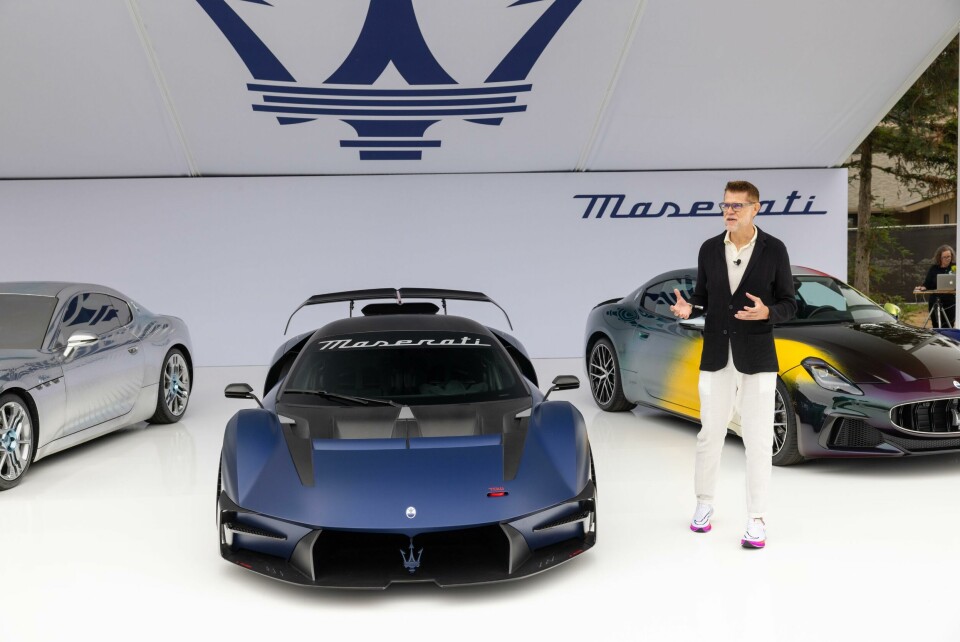
Maserati’s Klaus Busse on the MCXtrema and why simplicity is key
The head of Maserati design gives North America correspondent Laura Burstein a walkaround of the brand’s most powerful customer car during Monterey Car Week and shares his thoughts on the role of design and keeping things simple
Among the many debuts during Monterey Car Week was the unveiling of the Maserati MCXtrema, a track-only, beastly version of the MC20 that cranks out 720 bhp and will be limited to 62 units, with no two examples alike. Klaus Busse, head of Maserati design since 2015, spent some time with us discussing the car, as well as thoughts on the studio and his recently expanded role.
Laura Burstein: You’ve just unveiled the MCXtrema, which before we knew as Project24. What was the mindset when you went to work on this car?
Klaus Busse: With this project, literally the gloves came off. Since the car is not homologated for the road, we could do what we wanted.
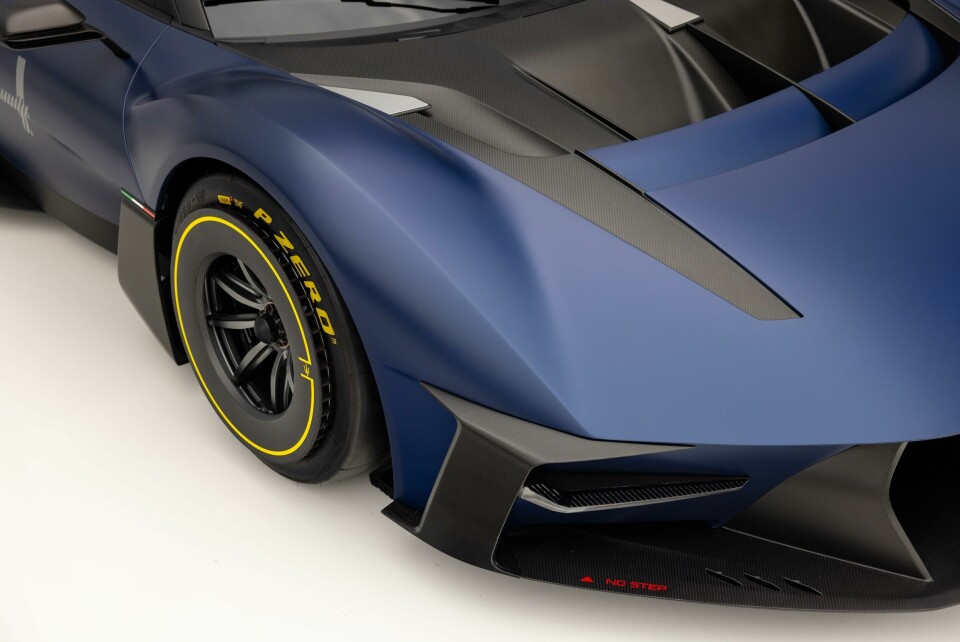
LB: How much of the MCXtrema is based on the MC20, and where did you have freedom to play?
KB: At the core is the same carbon fibre tub that’s on the MC20. So there was a fundamental understanding of where things would go. We knew where the engine is, and we’re using the same wheels and tyres as our GT2 race car. But to take it to the next level I knew there would be a lot of aerodynamic pieces. The main point in the beginning was to find these three lines to define the car, and then everything else orientates itself from these lines.
We kept the central fin to give this kind of Le Mans Prototype feel
LB: Can you walk us through these lines?
KB: There is this horizontal line that goes from the front splitter that cuts through the ‘24’ graphic on the body side and wraps all the way around to the tail light. It’s like the spine of the car in side-view. It orientated the stance and allowed us to find a place for all the other elements. And while other things might have been changed here and there during development, this line never moved.
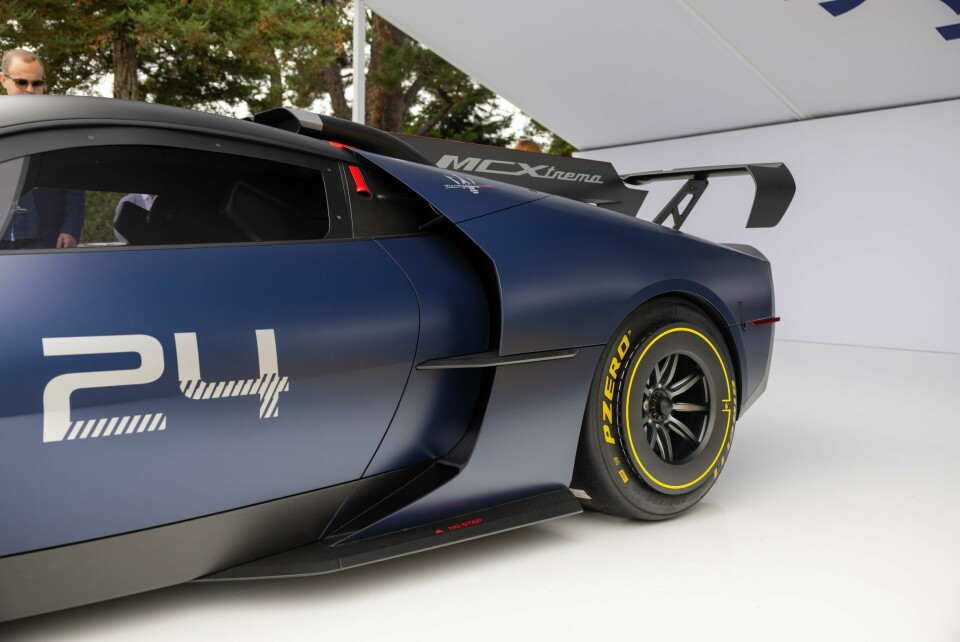
The second line runs vertically from the roof snorkel down the side of the car. This line isn’t truly vertical now, but in the first sketch, the thought was to do this really brutal intersection between the passenger and the business parts of the car. When we did it in 3D, it didn’t look quite right; it looked like we took different pieces from different cars. So the team worked with it and animated it a bit. All these pieces are organised on this line: the roof snorkel, the funnel for the lower deck, the intercooler and brake duct.
The third line was the Y-zero line, where you come from the hood, go to the roof and then from here I just went horizontally back. We kept the central fin to give this kind of LMP car feel, and it also gives the car lateral stability. Every other line was debatable beyond those three main lines.
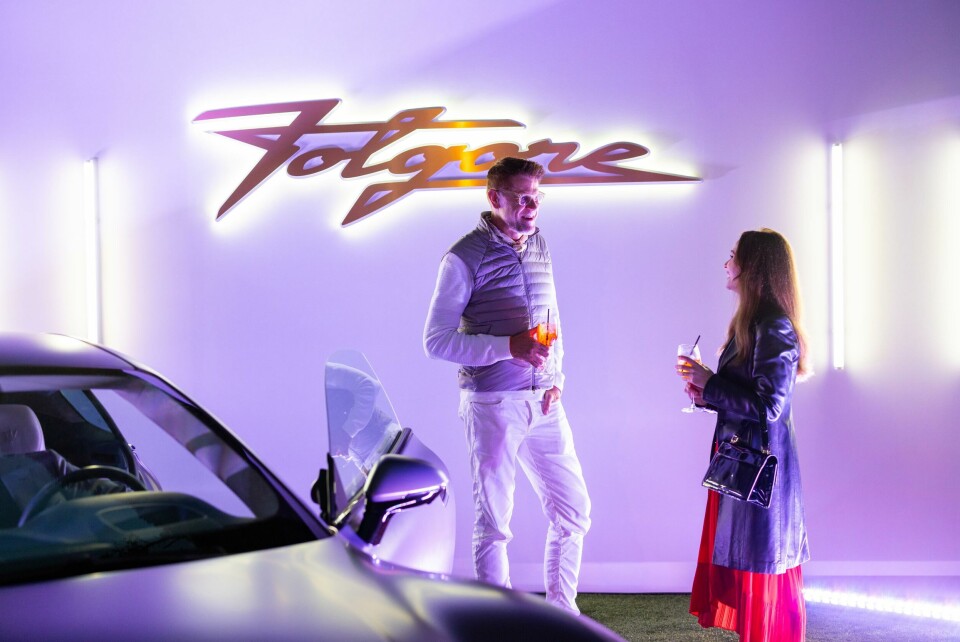
LB: Your theme is quite simple compared to many of the supercars and hypercars we see here in Monterey. It must be a huge challenge to create something that stands out in a place like this when everyone is jaded and has seen it all.
KB: I believe — maybe naively — in one thing: The world is very simple. Everyone is trying to explain to you how complex it is. My whole career I’ve been fighting for the opposite. I try to simplify things. The key here is that even though there are so many elements, the car is visually digestible. It’s a testimony of finding these three main lines. Otherwise everything would just be individual stories. We actually had one theme that was too radical, and we made it more reasonable.
With this blue we wanted to express the sinister side, the dark side of Maserati
LB: Was there anything on the car you fought about with the engineers, or a specific challenge where you had to get creative?
KB: Probably the most difficult piece was the side fin, which is a key component of that second line. On one side it covers the fuel door, and there was a lot of debate as to whether we could keep this theme. That fin allows us to push the air through and keep it on the lower deck. There was a mutual respect because everyone understood this was an incredibly important line.
The solution was to make a section of this piece movable. It’s spring-loaded so you can pop it up, refuel, and put it back down.
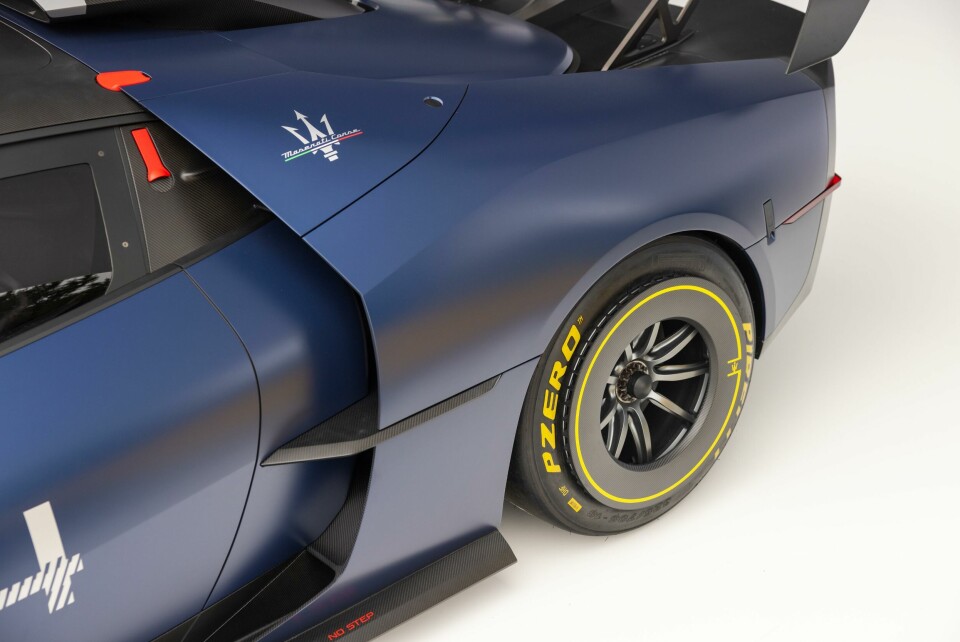
LB: Is there a significance to the paint colour?
KB: Blue is our racing colour. Historically all Italian brands were red, but with the MC12 in 2005 we migrated to blue. It’s also the colour for Italian sports teams, including football and the Olympics. But we aren’t constrained to just one shade. Our Formula E car, appropriately, is more of an electric shade. Here we wanted to express the sinister side, the dark side of Maserati. So we went to this night blue in a matte finish to express the seriousness of the car.
Heritage is important to us, but we don’t look into the past
LB: The prototype we see here doesn’t have an interior, but can you give us some hints?
KB: We haven’t shown the interior yet, but it’s basically FIA regulation with a roll cage, an escape hatch on the roof, and a fire system. The car by default comes only with a driver’s seat, but a passenger’s seat is available. Basically we’re creating the sensation of a single-seater cockpit where everything is is catered around you and the interior is perfectly symmetrical. Then on the passenger side, we have a frame that is very much like the Birdcage idea where you have this aluminium frame with this kind of bone structure, so you see a little bit of this coming through.
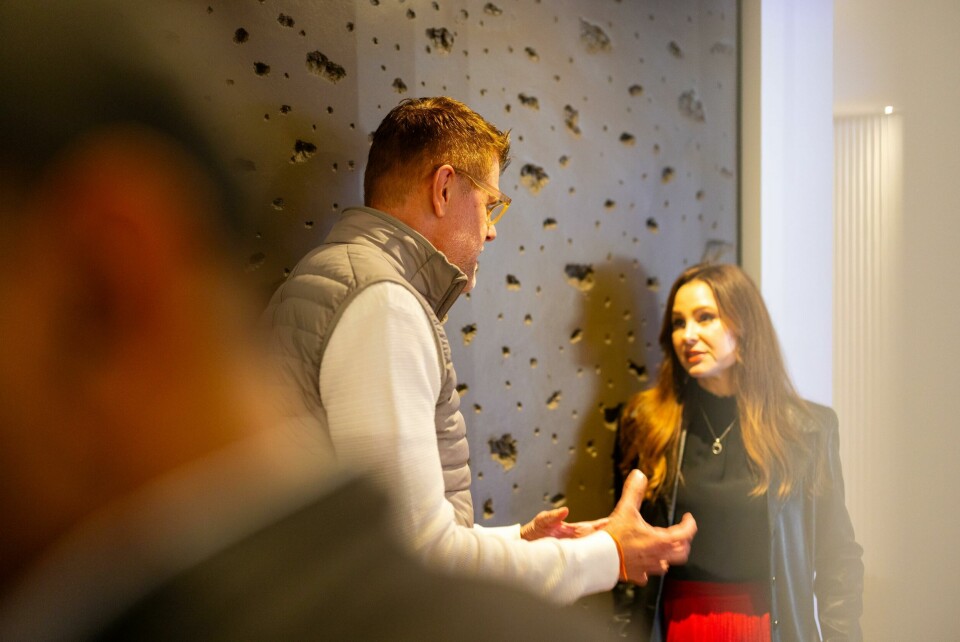
LB: Speaking of the Birdcage, how important is heritage when designing a car like this?
KB: Maserati needs to have a certain DNA, so it’s important to us, but we don’t look into the past with a rearview mirror and say this is the shape of the Birdcage or whatever so we have to do it exactly like that. It’s more like, let’s be innovative, otherwise you cannot win the race.
That said, from the top view of the MCXtrema you have this typical construction like with all our cars, this kind of fuselage design with these big pods that hold the wheels. This goes all the way back to our idea of Gran Turismo. Seventy-six years ago when we put our race cars onto the road, they were like open-wheel Formula One cars. To make them road legal, they had to cover the wheels [with bodywork]. That’s what creates these big volumes on cars like the A6 GCS, Birdcage, et cetera.
LB: Thinking beyond the car, we have the design conference coming up at the IAA in Munich where one of the panel sessions is on holistic design and how teams have become more collaborative. Not just in terms of the actual design roles, but between other departments as well. Do you have specific examples of this within your company?
KB: When I came to Italy and became responsible for multiple brands, I relocated the studio and consolidated all the internal functions and brought in the external functions, including the engineers and marketing. Now we have marketing in the early design reviews so they become part of this creation process. So when we launch a car, I don’t have to explain to them why we did what we did.
LB: You’ve gone through various transitions over your tenure, from Daimler/Chrysler to FCA, to now Stellantis, focusing primarily on Maserati. How has your current role evolved over the past couple of years?
KB: We are very lucky that our CEO Davide Grasso was the former CMO of Nike and also the CEO of Converse. He has created this atmosphere where my job is not only about the car, but everything you see. Since 2021 I have also been leading the Stellantis Design Studio, which basically does everything but cars. It’s an amazing opportunity for a designer. At the end of the day, we’re storytellers.















